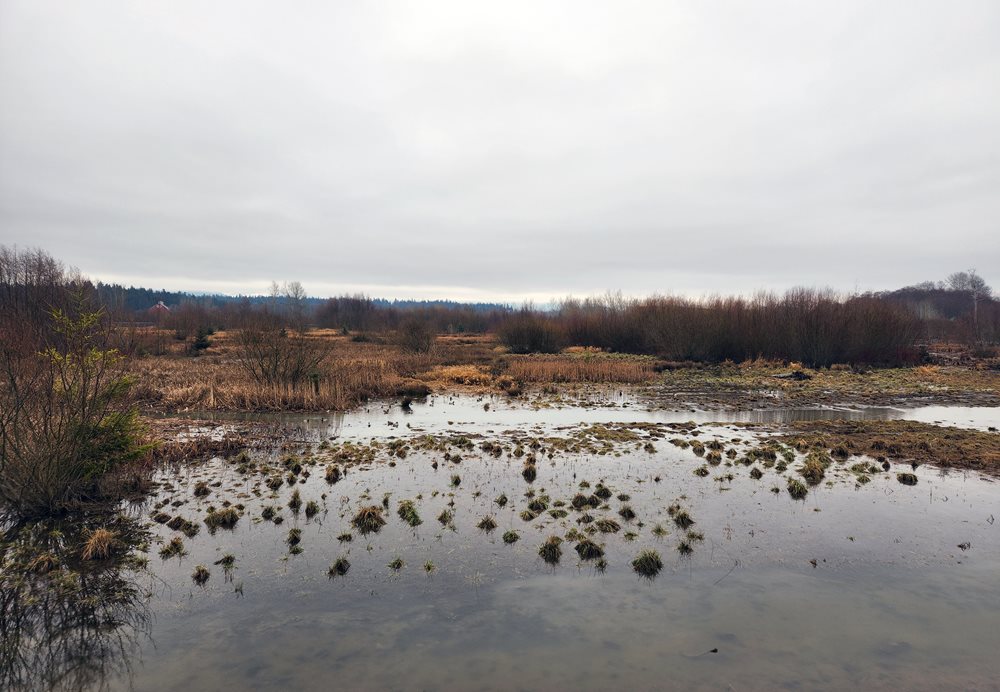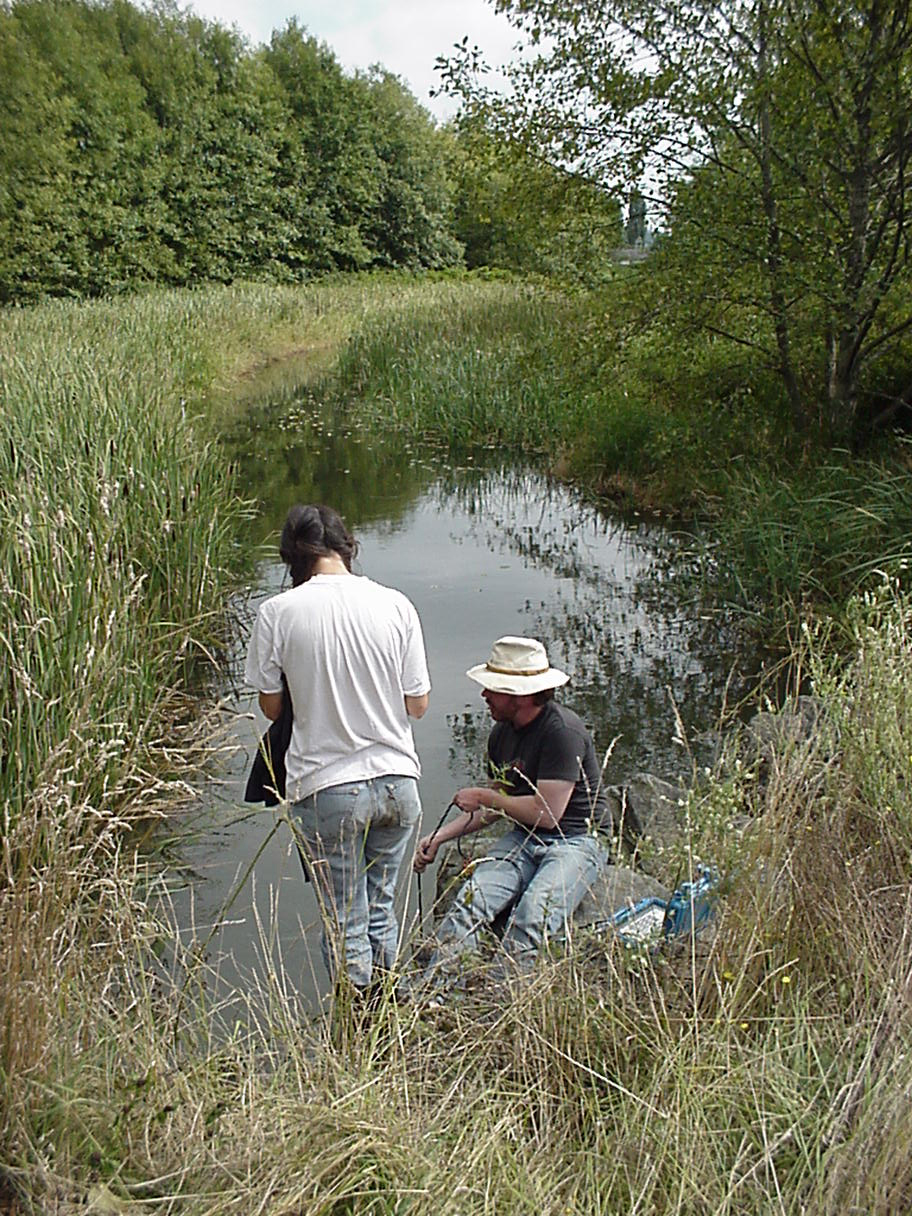
The recently completed Lower Dungeness Floodplain Restoration project reconnects the lower Dungeness River to its historic channels and floodplain. This will ensure the perpetual conservation and restoration of wetlands, floodplains, and shorelines along one of the most important river systems on the Olympic Peninsula.
Today is World Wetlands Day, and we are celebrating the work our agency has done to support the conservation and restoration of Washington state’s wetlands.
Wetlands — land areas that are saturated or flooded with water, either permanently or seasonally — perform many ecological functions, and our knowledge and understanding about the complexities that wetland ecosystems represent is always growing.
Our wetland ecologists have already documented the environmental benefits wetlands provide, including:
- Water purification
- Flood protection
- Shoreline stabilization
- Groundwater recharge and streamflow maintenance
- Habitat for fish and wildlife
Not all wetlands provide all these benefits, and how a wetland near you works depends on its location and type.
Wetlands can be found in different places:
- Inland: freshwater marshes, lakes, rivers, floodplains, and swamps
- On the coast: saltwater marshes, estuaries, and coastal lagoons
Wetlands restoration and economic benefits
Restored wetlands bring seven key benefits to our communities:
- Revive biodiversity: 40% of the world’s species live or breed in wetlands. Restoring wetlands powers the local food chain and attracts wildlife.
- Replenish and filter water supply: Wetlands naturally filter water, remove pollutants, and boost the local water supply.
- Store carbon: Specific types of wetlands, especially peatlands, mangroves, intertidal marshes, and seagrass beds, are exceptionally efficient carbon sinks.
- Blunt the impacts of floods and storms: Restored wetlands can act as sponges against excess rainfall and flooding, buffer coastal storm surges, and shield communities in extreme weather.
- Improve livelihoods: Wetlands create livelihoods in fishing and aquaculture and provide goods like reeds and grasses. These opportunities often benefit tribes.
- Boost eco-tourism: A restored wetland can be a sustainable magnet for visitors, since it is a natural attraction that draws tourists and opportunities to serve them.
- Enhance quality of life: Revitalized wetlands provide a place to relax, experience nature, and enjoy a sense of satisfaction at their resurgence.
There are significant economic benefits associated with wetlands. If a community had to build flood-control or water-treatment systems to replace the functions wetlands provide, the costs would far outweigh the expense of preserving natural wetland systems. An independent study found freshwater wetlands in the Puget Sound region alone could be worth about $7.7 billion to Washington’s economy.
Wetlands also provide habitat for myriad fish and wildlife, including endangered and threatened species and economically important species such as salmon.
As amazing as wetlands are, and their contribution to our economy and the environment, they do have their limits. A partly filled or otherwise-damaged wetland can only partially meet its potential for flood control, shoreline stabilization, or groundwater recharge.
A degraded wetland can lose its capacity to remove excess sediments, nutrients, and other pollutants. It can also lose its habitat value for fish and wildlife. Wetlands may have tremendous capacities to provide environmental benefits, but they are not indestructible. If we want wetlands to continue to perform their ecological functions, everyone must do their part to protect them.
Learn more about how wetlands perform their complex functions.
How you can help restore wetlands
There are large and small ways individuals and groups can play a part in protecting and restoring Washington state’s wetland resources.
Make choices that minimize the loss and degradation of wetlands and maximize awareness of how urgent their restoration is:
- Learn more about wetlands, their value for people and the planet, and become aware of the major threats to this valuable ecosystem, such as drainage, pollution from waste and chemicals, and invasive species.
- Make water-friendly and ecosystem-conscious decisions. Use water sparingly. Adopt a diet with less environmental impact. Avoid using toxic products that could flow into wetlands. Don’t dump waste or trash in wetlands.
- Volunteer with a local environmental group to remove invasive species, plant native species, and monitor wetland ecology.
- Pledge to Act for Wetland Restoration. The “Wall of Pledges” is a great place to post your Conscious Choices, Persuasive Voices, and Bold Actions for wetland restoration.
You can find even more ways to help at worldwetlandsday.org.
Stay tuned for future blog posts on recently completed wetlands restoration projects.



